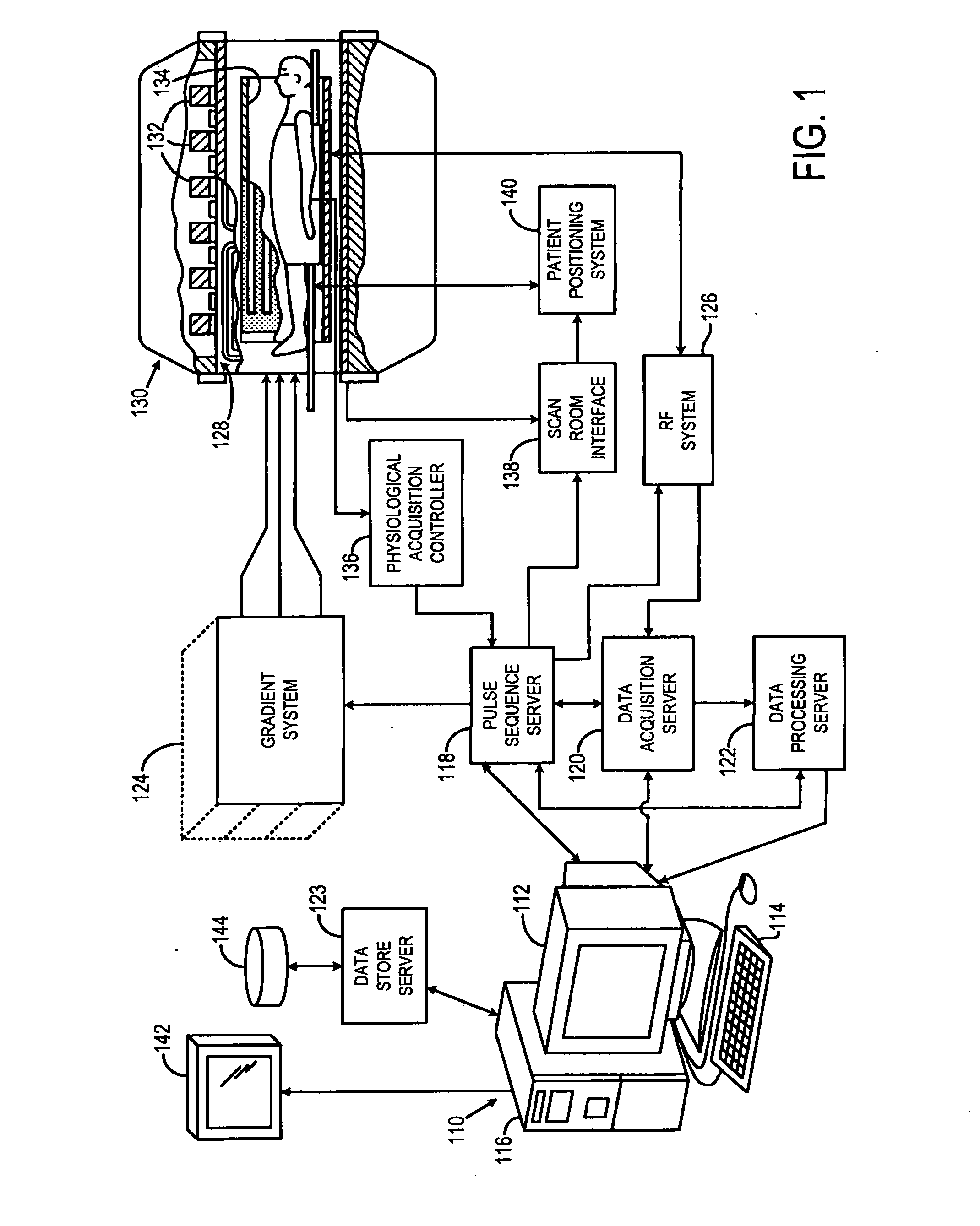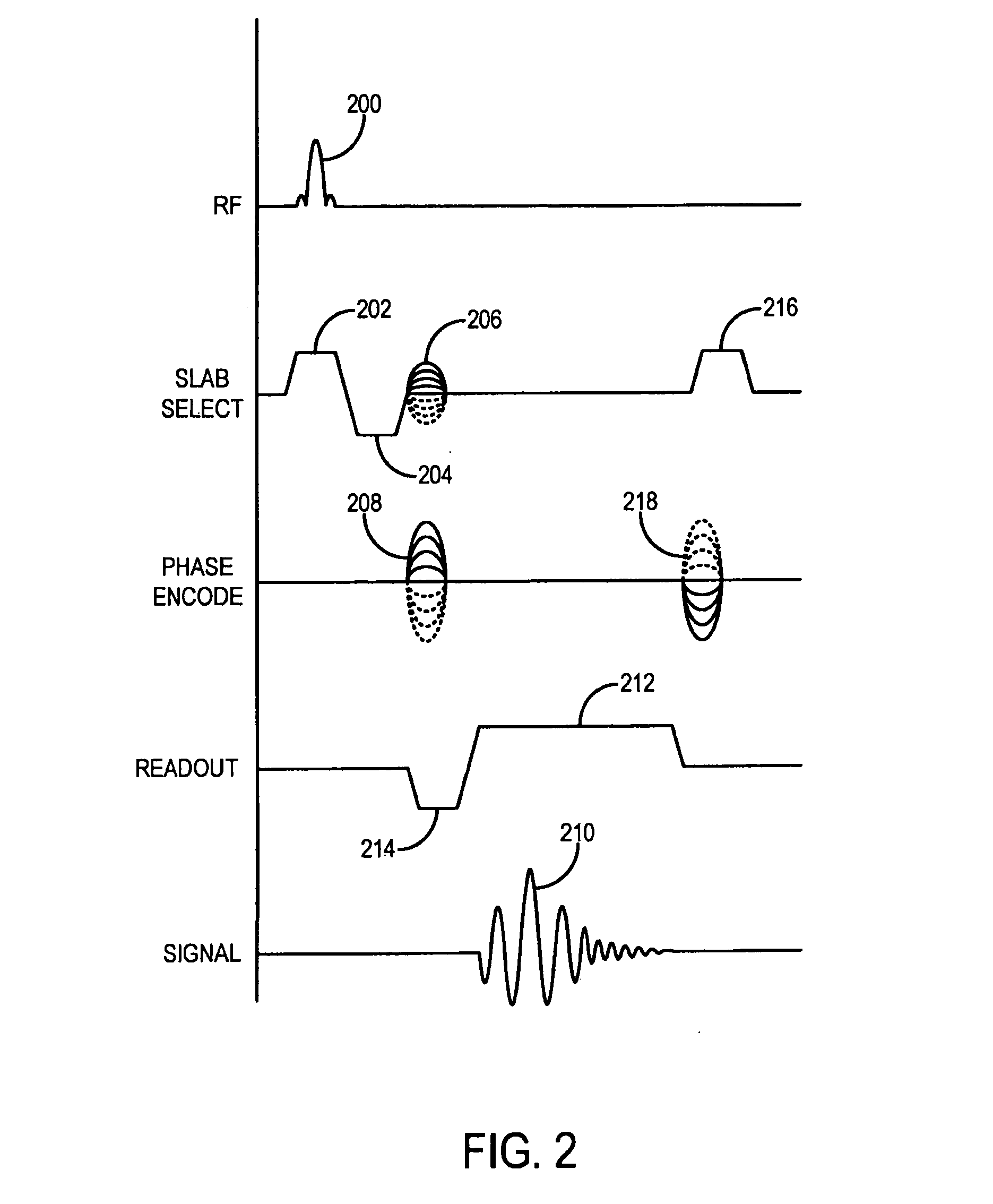System and method for combined time-resolved magnetic resonance angiography and perfusion imaging
a technology of magnetic resonance angiography and perfusion imaging, which is applied in the field of magnetic resonance imaging systems and methods, can solve the problems of limiting the diagnostic information in the image, imposing an upper limit on spatial or temporal resolution, and short tr acquisition sequences severely limit the signal-to-noise ratio (“snr”) of the acquired imag
- Summary
- Abstract
- Description
- Claims
- Application Information
AI Technical Summary
Benefits of technology
Problems solved by technology
Method used
Image
Examples
Embodiment Construction
[0031]Referring particularly to FIG. 1, the invention is employed in a magnetic resonance imaging (“MRI”) system. The MRI system includes a workstation 110 having a display 112 and a keyboard 114. The workstation 110 includes a processor 116 that is a commercially available programmable machine running a commercially available operating system. The workstation 110 provides the operator interface that enables scan prescriptions to be entered into the MRI system. The workstation 110 is coupled to four servers: a pulse sequence server 118; a data acquisition server 120; a data processing server 122, and a data store server 123. The workstation 110 and each server 118, 120, 122 and 123 are connected to communicate with each other.
[0032]The pulse sequence server 118 functions in response to instructions downloaded from the workstation 110 to operate a gradient system 124 and a radiofrequency (“RF”) system 126. Gradient waveforms necessary to perform the prescribed scan are produced and a...
PUM
 Login to View More
Login to View More Abstract
Description
Claims
Application Information
 Login to View More
Login to View More - R&D
- Intellectual Property
- Life Sciences
- Materials
- Tech Scout
- Unparalleled Data Quality
- Higher Quality Content
- 60% Fewer Hallucinations
Browse by: Latest US Patents, China's latest patents, Technical Efficacy Thesaurus, Application Domain, Technology Topic, Popular Technical Reports.
© 2025 PatSnap. All rights reserved.Legal|Privacy policy|Modern Slavery Act Transparency Statement|Sitemap|About US| Contact US: help@patsnap.com



